Tour de France crash inspires high-tech solution for safety
Norwegian's Safe Cycling Race brings LED signs to major pro cycling events to alert riders
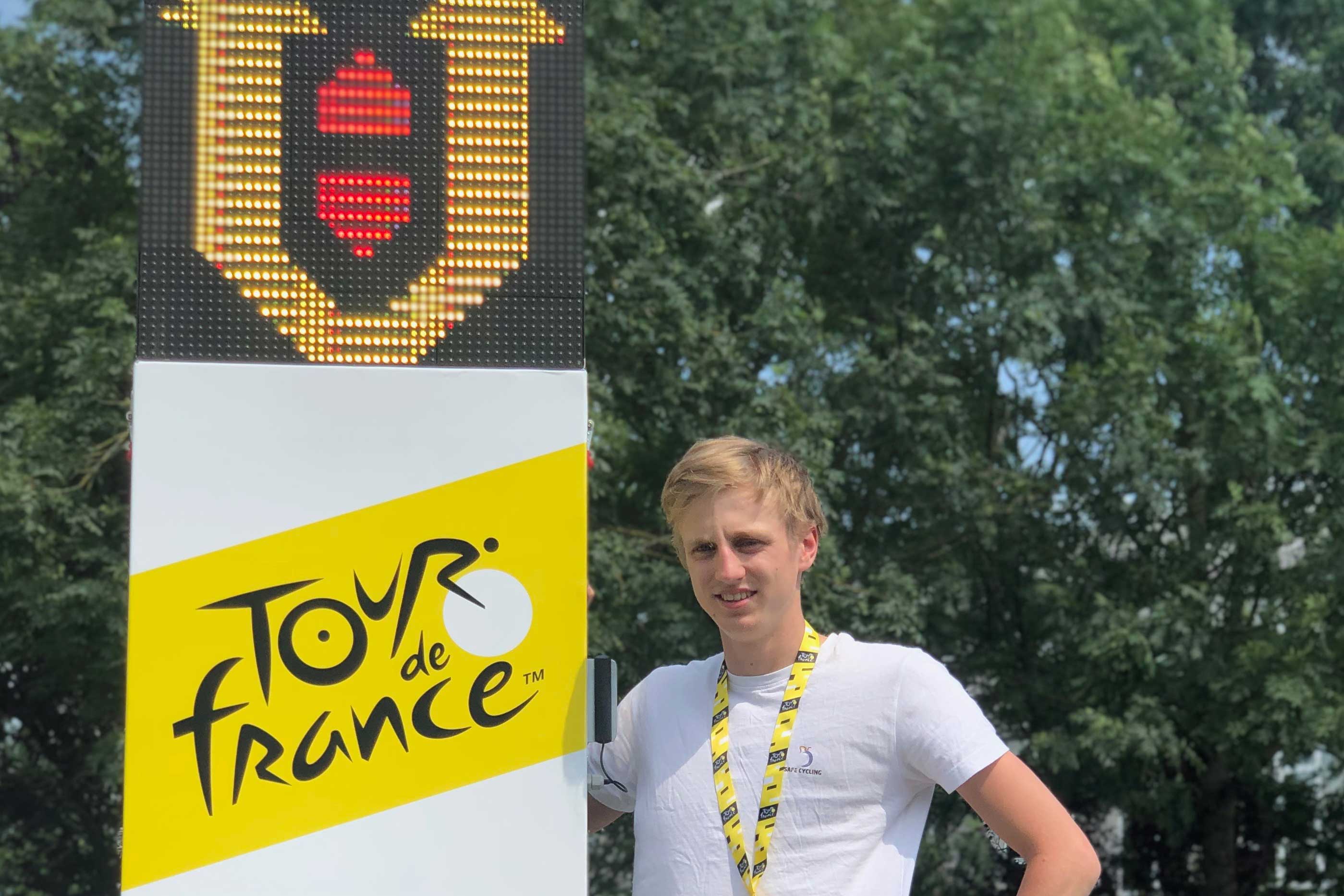
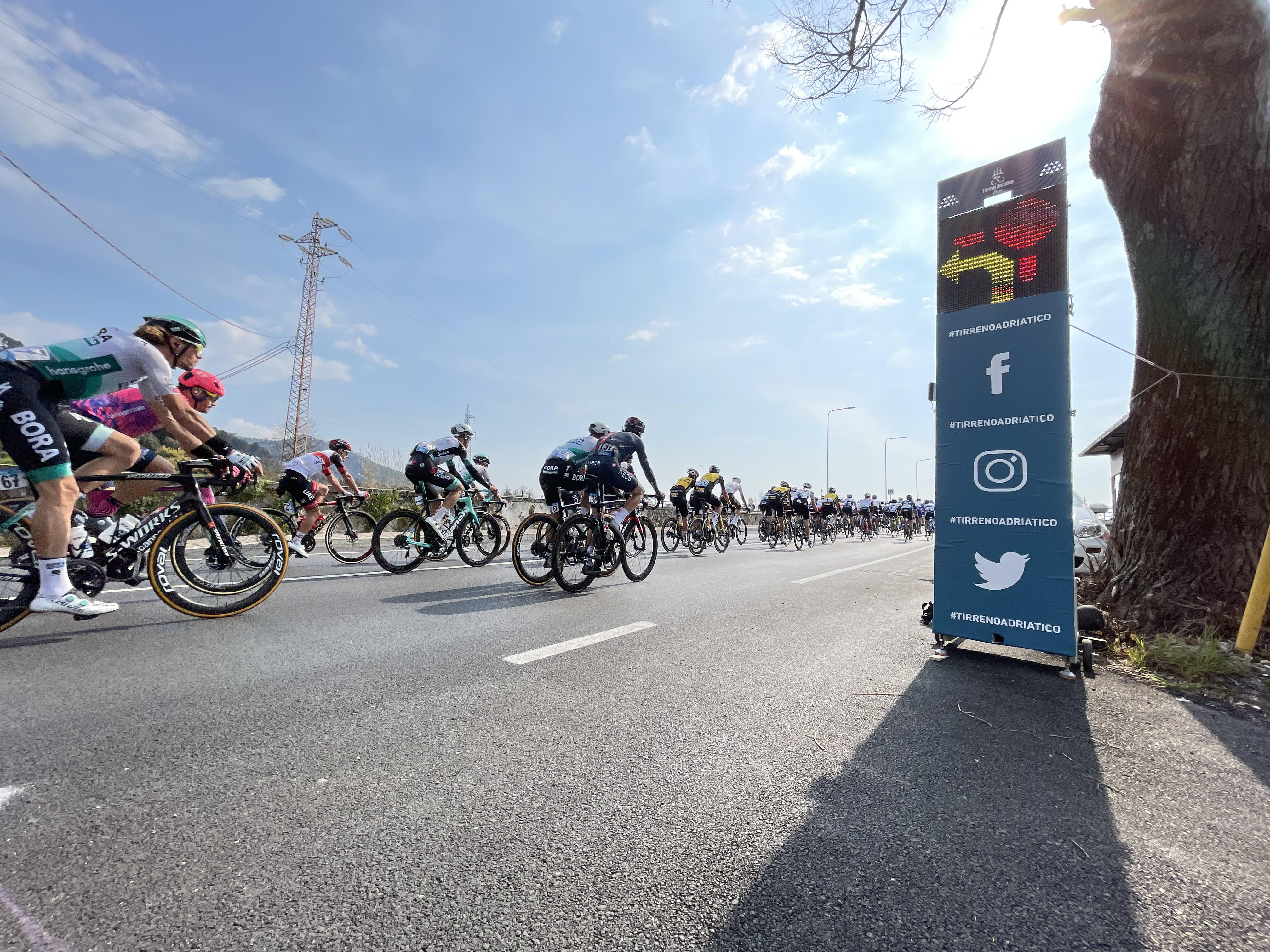
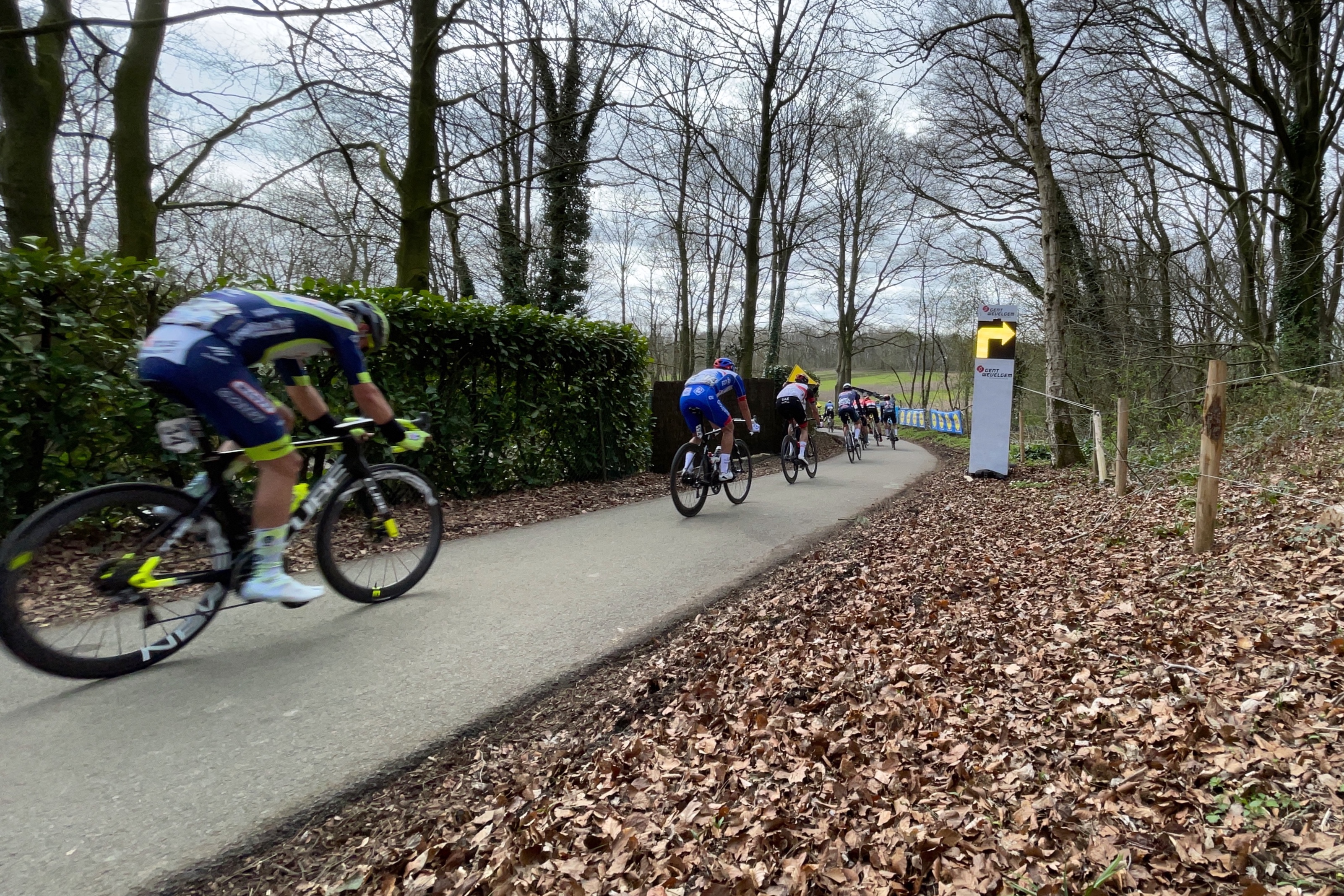
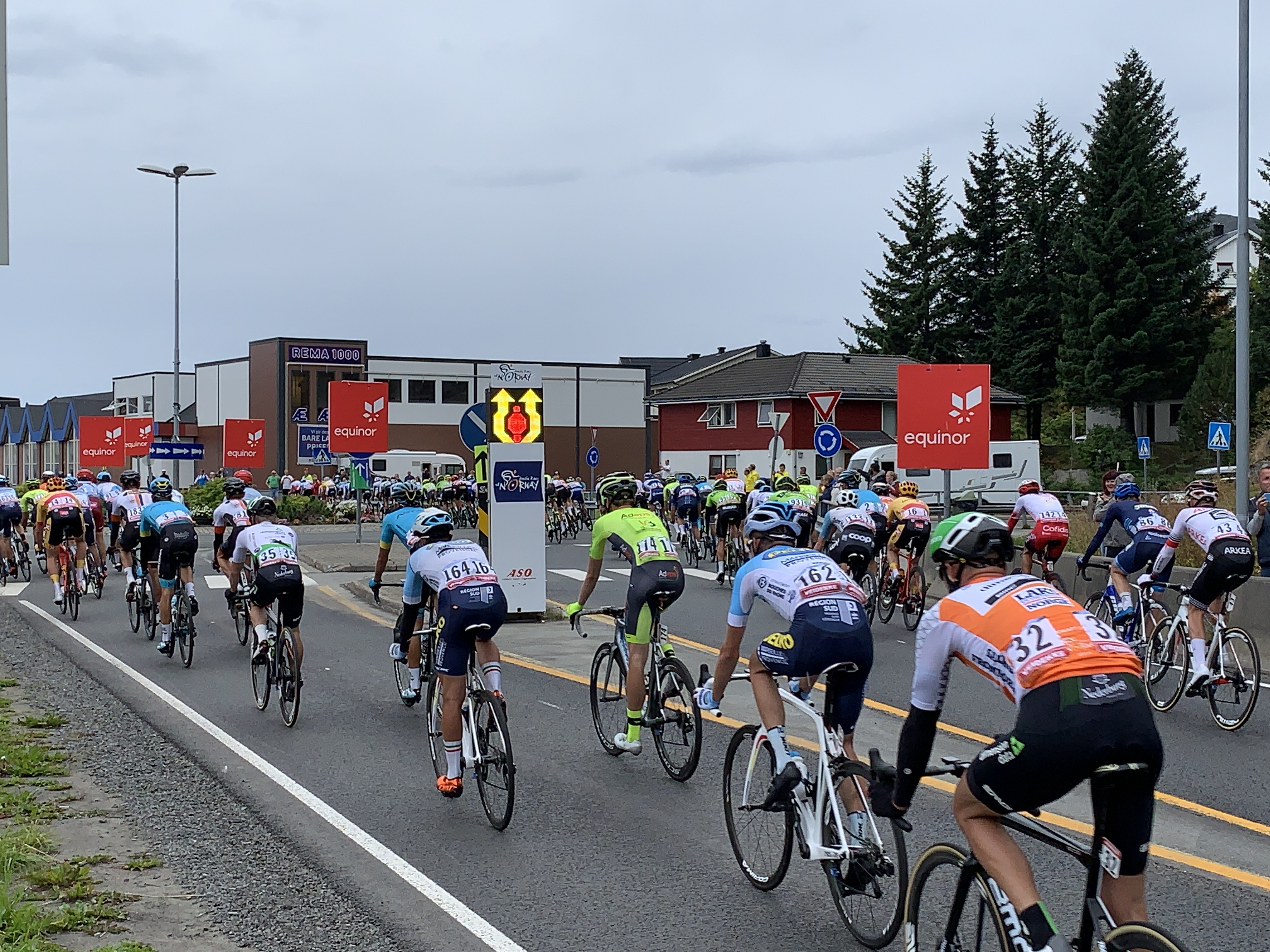
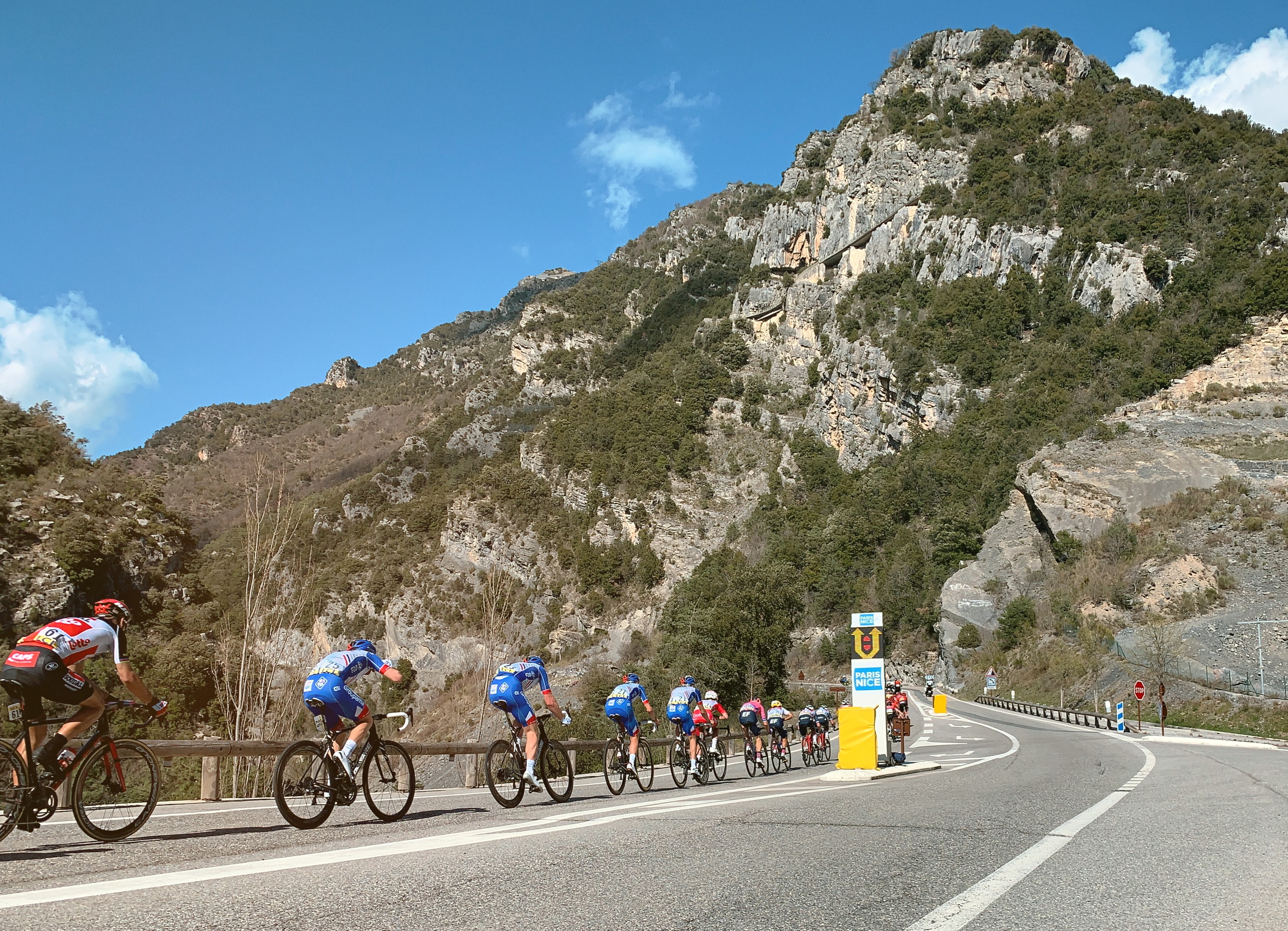
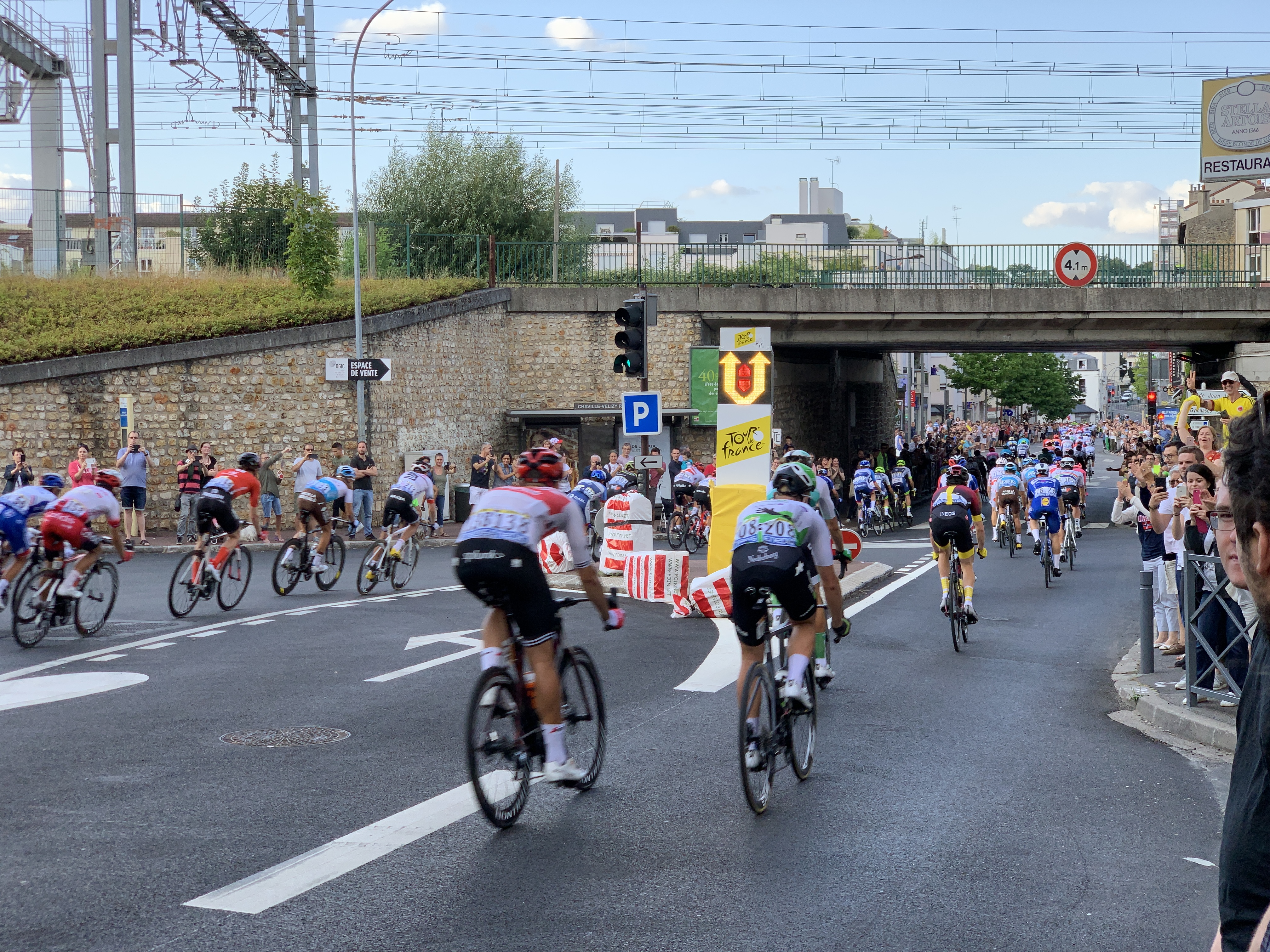
In the opening stage of the 2016 Tour de France, Alberto Contador rounded a sharp corner only to find an unexpected traffic island, slid out and crashed, taking down several other riders including one from Team Sky. What is an unfortunate and increasingly common problem in pro cycling proved to be a business inspiration for Norwegian entrepreneur Markus Lærum, who founded the warning sign company Safe Cycling Race.
Astute cycling fans might notice some of Lærum's infrastructure showing up more frequently in the top professional cycling events, in particular during Gent-Wevelgem this weekend when there was a flashing sign indicating the sharp right turn coming off the race's key ascent, the Kemmelberg.
Look closer at races over the past three years and you'll see the same intuitive signs at roundabouts, before sharp turns with traffic islands, ahead of tunnels and other obstacles that, unseen amid the peloton, could cause a wreck. The monolith-like signs have a programmable LED screen and siren that can provide easy to understand warnings of obstacles ahead.
Lærum explained to Cyclingnews that after graduating from high school in 2016 with a focus on entrepreneurship, he was watching stage 1 of the Tour de France and found his inspiration for the business.
"I remember watching Chris Froome crashing into this island where there was no warning, no policeman, no nothing. At that point, I had just finished school, so I was trying to figure out what to do with my life. And I realised there was a problem with cycling with all these obstacles and crashes. So I gave myself permission to find a solution," Lærum said.
"The first year was all about figuring out how to do it. And in late 2016, I just started sending emails to all the big organisers. And after a few months, I got in contact with the ASO, the product developer from the company, Thibault Freté. And he decided he would give us a shot in the Arctic Race of Norway in 2017. So I saved all my money, and put it into building three prototypes, as well paid for our entire trip to go to Arctic that year, just to be there and test it."
An avid cyclist, Lærum was also no stranger to pro cycling, having worked with the Tour of Norway and other regional events in various capacities. But the prototypes came with help from another Norwegian company, Brødrene Dahl, who, among other things, produce traffic signs for Norway's highways.
Get The Leadout Newsletter
The latest race content, interviews, features, reviews and expert buying guides, direct to your inbox!
"They said they could help us build a very special sign for cycling events. So they helped us out with producing the three prototypes. And I saw the three prototypes were way too small and not too visible. But ASO saw the potential and said we could continue working together."
By 2018, Lærum had a taller design with better sounds and controls, and had increased the number to 10, and campaigned to put them in use in more events. "Every week, I've been trying to get in contact with organisers, and in the beginning, it was really tough because no one more or less answered. But after 2019 we got more feedback from organisers, then had the chance to be in more events."
Now, after many unreturned emails, Safe Cycling Race has expanded to most of the WorldTour events, the Women's WorldTour races that use the same routes as the men's, and Grand Tours including the Tour de France.
It has helped that the UCI and the riders have been focused on improving safety. The UCI is rolling out new or newly enforced rules which are set to take place on April 1, including standards for barriers, which comes after the grievous injuries to Fabio Jakobsen when the Tour de Pologne's barriers failed.
Another company, Boplan, which is based in Belgium, has partnered with most of the Classics to introduce new interlocking plastic barriers for the race finishes. Boplan also has some stationary warning signs for traffic islands and other obstacles, but Lærum's product is the only one with flexible and rapidly digestible symbols that give more detail about the danger ahead.
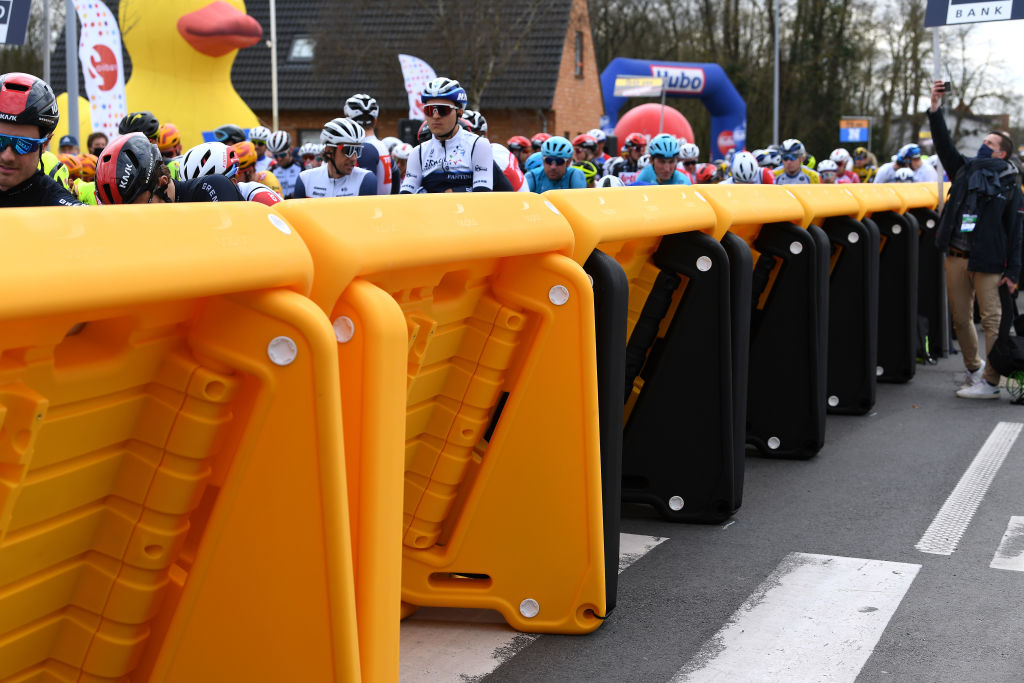
For example, the sign might flash with a yellow arc with red squares inside it before a roundabout; the angle of the arrow can be programmed to reflect the tightness of an upcoming turn or two arrows coming together can warn of a narrowing ahead.
After the 2019 Paris-Nice, Safe Cycling Race asked riders for feedback on the signs, speaking to Heinrich Haussler, who agreed that in the stress of a race, the simple, blinking sign is easy to notice. "To have something in front of the corners or dangerous sections where it's blinking - your eyes, your brain - you notice it more than if there's nothing there."
Mitch Docker said he was impressed with one warning sign indicating a narrowing ahead of a tunnel. "Normally we just have a stationary sign and sometimes you see so many of them you don't take notice anymore but this sign I really saw it and thought, there's a tunnel coming. It was something that really helped me at that moment."
The flashing warning signs can replace some of the gendarmes or signalmen, who put themselves in harm's way with just a whistle and a flag held overhead to protect them from the 200-rider peloton hurtling toward a traffic island. In the 2018 Tour de Yorkshire, a signalman was nearly run over by the driver of the Astana team car when they overcooked a bend and ran over the sign, with the marshal leaping away at the very last moment.
There will still be a human presence marshaling races since people are easier to transport and deploy as the race moves along, but stationary infrastructure like Safe Cycling Race's warning signs can be a welcome addition, especially when, according to the Nokere Koerse organisers, marshals are harder to find and more expensive as a result.
Cyclingnews asked the UCI's safety working group rider representative Matteo Trentin (UAE Team Emirates) what he thought about the new developments.
"Of course it's nice to see organisers are moving together with companies who produce barriers and protection to make the race environment safer and safer," Trentin said. "I think it's a nice step forward - at least they look safe for an impact, they were straight, they were all connected really well together. This is what we want.
"It wasn't just the barriers, there were nice signals on the side of the road, and that's also really important, the protection of the poles and things. Of course, it takes a lot of work but it's the way to go. That's what we've been asking for, for a long time. It's really nice to see organisers doing that even before it is compulsory. Thanks to them. I hope they pave the way for all the other race organisers to do the same."
Lærum has only 20 warning signs this season, and travels around to all the races with a small crew - just four people - two full time, two part time - and two cars to cover all the Grand Tours, Monuments and most of the rest of the WorldTour events.
"I have a total of 200 travelling days. And I've been away from home since late February. I'll get one week at home before the Arctic Race of Norway. We are moving more or less every day. Now in March, I had the chance to stay in an apartment for a month for all of the Belgium classics, but there is a lot of travelling every day."
Currently, the company focuses on the final 35km of a race or major obstacles like the Kemmelberg for the signs, but Lærum says they're developing a new solution and hope to cover much more ground next season. In the future, they also hope to expand to other sports.
"We are trying to get into triathlons as well, a lot of running events, talking with some Norwegian skiing events even. So we are absolutely planning to expand into different sports and everything. At the moment we are quite alone (in the line of business) - but we are still doing everything we can to develop the product the best way."
With the increased emphasis on safety, race organisers like Golazo have been using a combination of measures. For the Classic Brugge-De Panne, Golazo used old standards like safety cushions around posts (and the Safe Cycling Race signs), around 70 motorcycle marshals/signalmen in addition to both Safe Cycling Race signs and Boplan's static warning totems - in use since 2019 - and their new interlocking finishing barriers.
Cyclingnews reached out to Boplan for this story but did not receive a reply from the representative.

Laura Weislo has been with Cyclingnews since 2006 after making a switch from a career in science. As Managing Editor, she coordinates coverage for North American events and global news. As former elite-level road racer who dabbled in cyclo-cross and track, Laura has a passion for all three disciplines. When not working she likes to go camping and explore lesser traveled roads, paths and gravel tracks. Laura specialises in covering doping, anti-doping, UCI governance and performing data analysis.